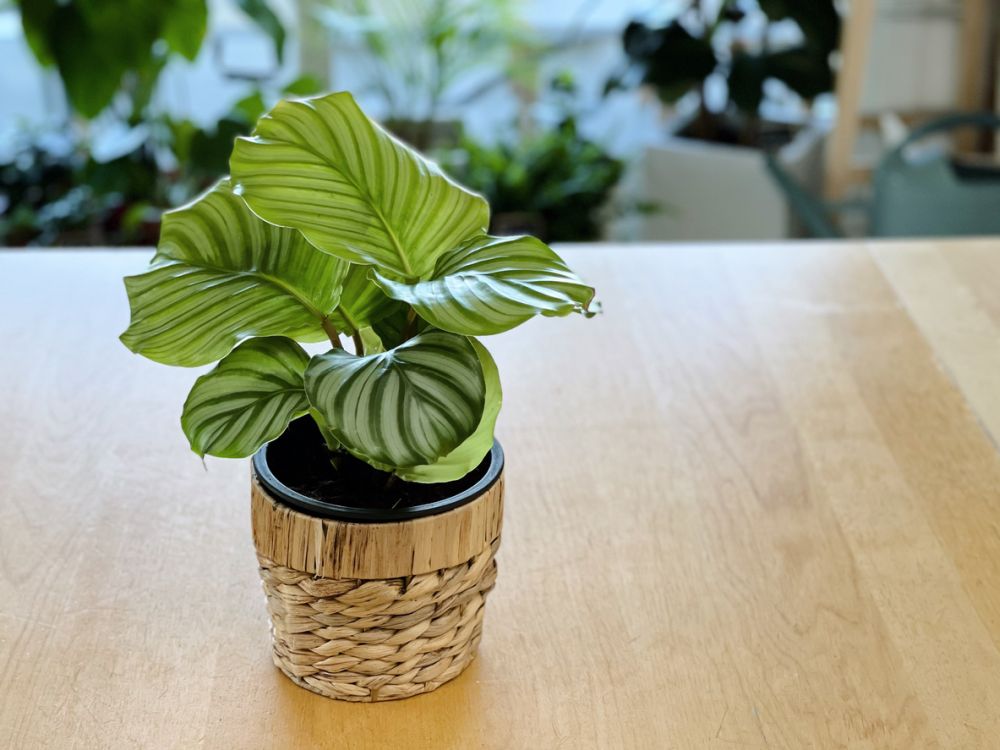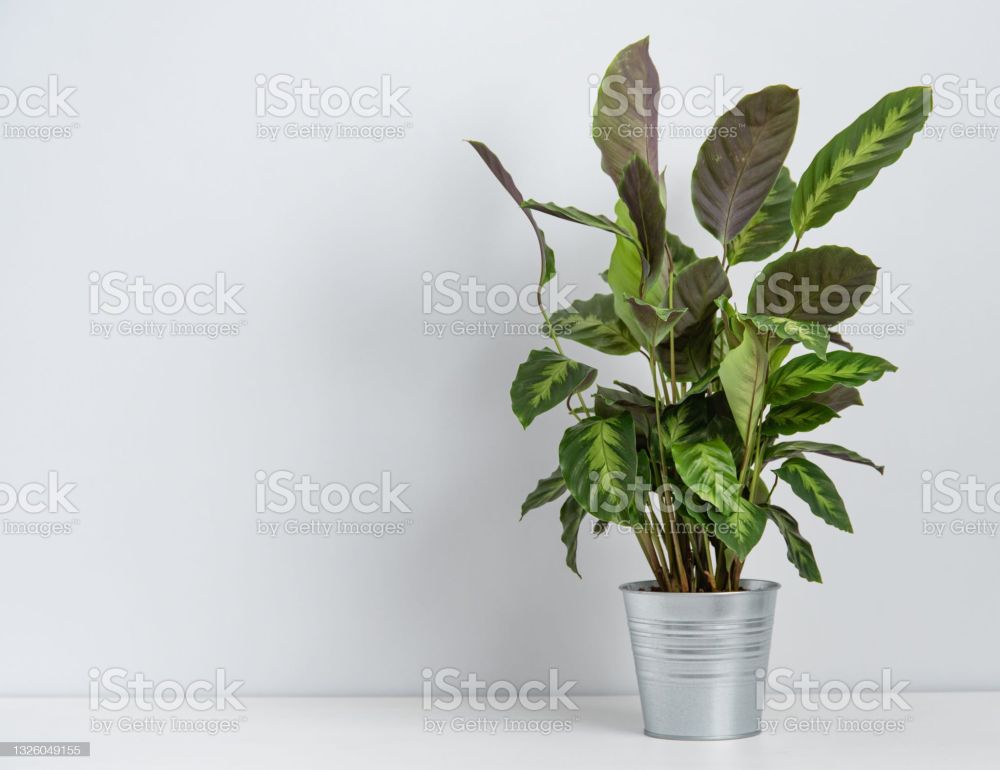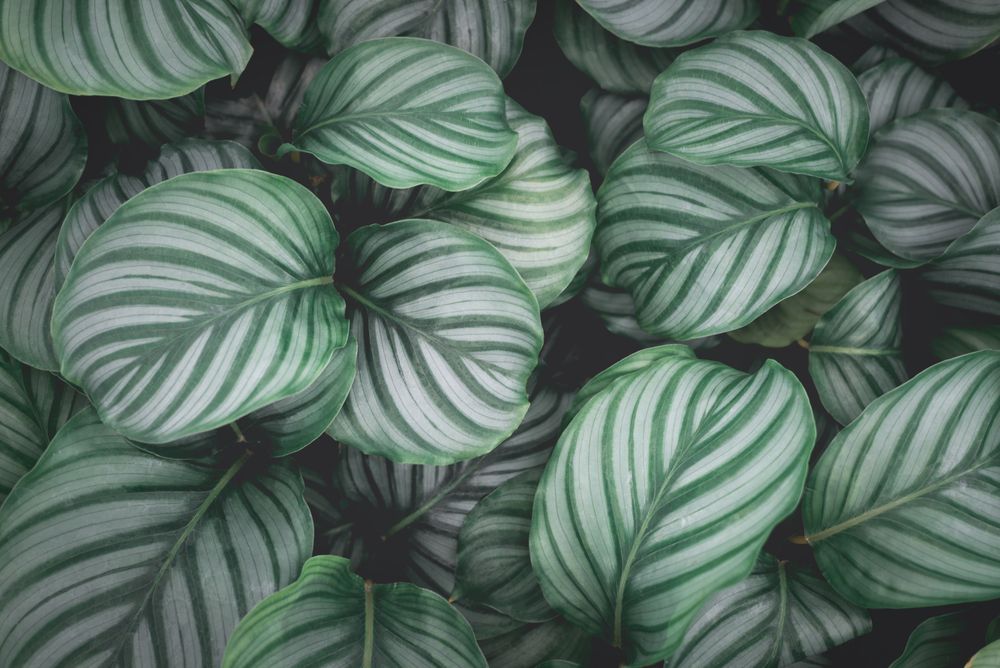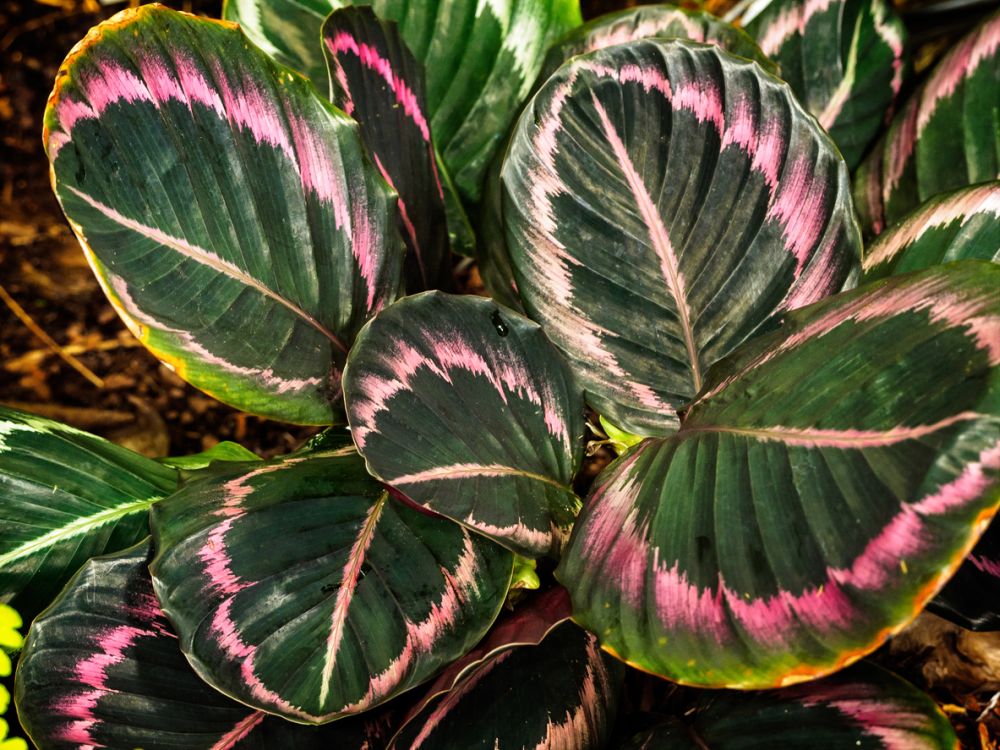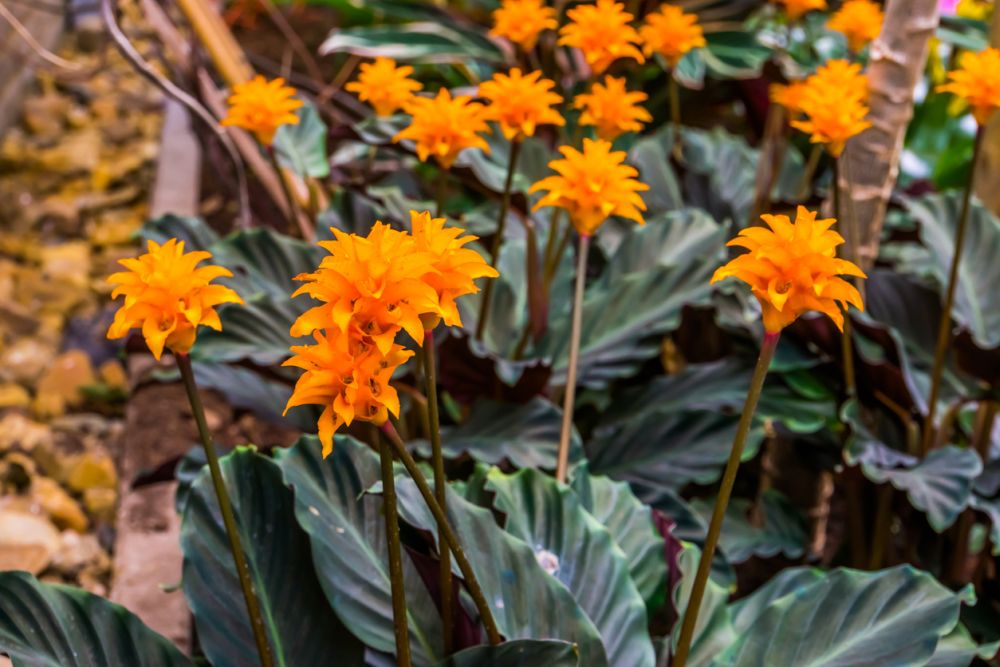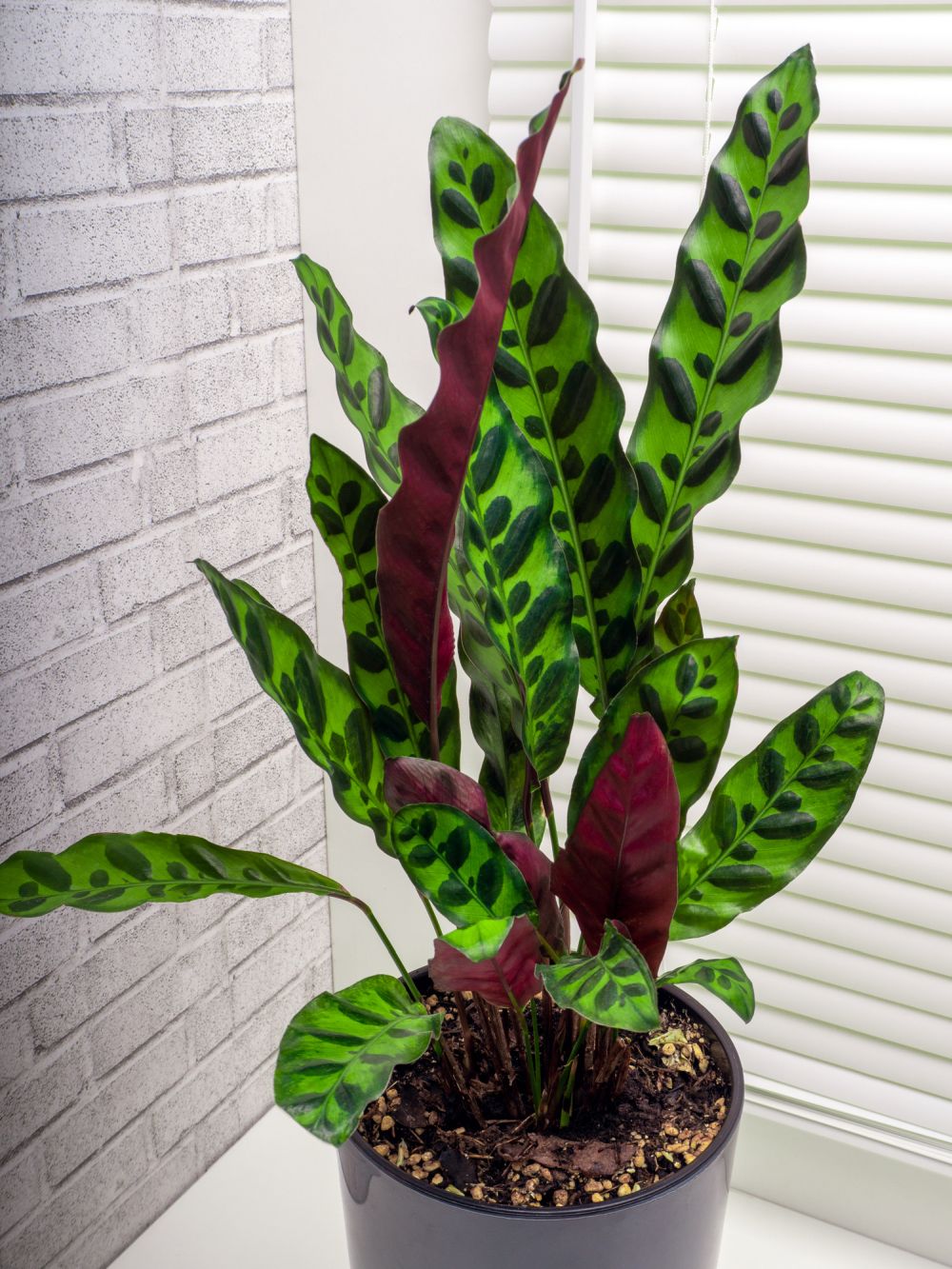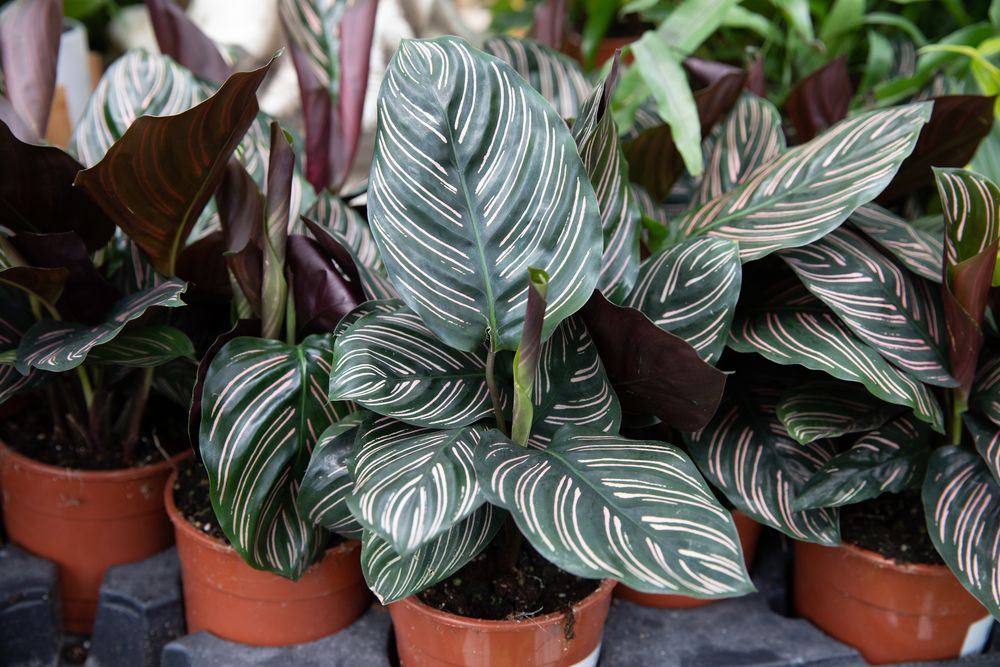Calathea Types: 7 Varieties of the Calathea Plant for Your Home
You don’t have to be an expert in houseplants to appreciate the aesthetic values of Calathea. It’s hassle-free, forgiving, and has broad glossy leaves with intricate patterns.
Discover seven Calathea types for different home settings!
But you do need to have a discerning taste to find which Calathea variety to grow.
For the uninitiated, all Calathea types look the same, with minor differences here and there – until you get a closer look and notice the vast decorative possibilities.
Some Calathea varieties are quite popular and readily available, while others are too exotic and rare for the local nursery.
Check out seven Calathea types to figure out what works better for your home setting!
How to Identify Calathea Types
In order to tell one Calathea variety from the next, you need to focus on one part of the plant – the leaf.
Calathea leaves come in different shapes, patterns, and colors. But the texture and complementing colors on the underside add to its ornamental properties, too.
So you should examine your Calathea with the same attention to detail you would provide to a kitchen appliance or a piece of furniture that you intend to buy. And focus on the following aspects of the plant, such as:
- Size and shape of the leaf: the larger and broader the leaf, the better.
- Glossiness of the surface: a plant with shimmering foliage is better than one with matted leaves.
- Patterns: some are just short stripes, while others are more intricate and complex. If your eyes get lost in the maze on the upper side of the leaf, you have a good candidate plant for your home.
- Leaf texture: a smooth surface is not the same as a deeply-veined one. It comes down to personal preference.
- Size of the mature plant: that too depends on the space you have at home.
- The growing medium: can you grow the plant in regular soil or do you need a special potting mix for it?
- The flowers: if the plant is not flowering at the time you purchase it, ask about the flower color.
7 Calathea Varieties That Deserve Your Attention
Here are some of our favorite Calathea types:
Rattlesnake Plant
The botanical name for the rattlesnake plant is Calathea Lancifolia.
If this is your first time growing Calathea, start with the rattlesnake. It’s quite popular, easy to grow, and doesn’t require much attention.
The leaves are usually long and narrow as opposed to the broad leaves of other Calathea varieties. Each one grows upright like a lance and can reach about 12 inches long.
The rattlesnake’s texture is glossy with a bubbly surface that gives it a unique look. The bubbles are usually dark green on a yellow-green background.
Plus, they’re shaped as small leaves, so it looks like each leaf has a set of leaves growing on its surface. Meanwhile, the underside is typically purple-red.
The Calathea Lancifolia grows to about 18 inches tall and requires loamy and well-draining soil. It doesn’t bloom indoors. But if you grow it in the garden, you’ll be greeted by small yellow flowers every spring.
The temperature must be between 65 and 85 degrees F (18 and 30 degrees C) year-round.
Zebra Plant
Also known as the zebra plant, Calathea Zebrina has broad leaves with light green stripes on velvety dark green surfaces.
It’s a highly ornamental plant that grows in just about any setting. From the living room to the corporate office, it brightens any spot you place it in.
Zebra plant’s leaves grow to about 12 inches long and 4-5 inches wide; they’re oblong with a soft and velvety texture.
The color combination is so becoming that it’s easy to mistake the stripes for neon colors as the whole plant takes up an otherworldly appearance in the right light.
The average plant grows to about 2 feet tall, so you need to have enough room. It also folds its leaves at night and opens them in the morning to conserve its moisture levels.
Calathea Zebrina grows in regular, well-draining soil and requires temperatures above 70 degrees F (21 degrees C).
Humidity levels also need to be above 70 degrees F (21 degrees C), especially if you have dry summers. Misting the plant once a week should keep it hydrated and the leaves glossy.
The zebra plant has white flowers with purplish hues. But like most Calathea types, it rarely blooms indoors.
Eternal Flame
Eternal flame (Calathea Crocata) is a beautiful houseplant with flowers that match, if not outpace, the leaves in their attention-grabbing beauty.
The leaves are long and slender, tapering off toward the end. They have thick patterns, alternating between light and dark green stripes, and it’s hard to tell the background color.
There’s something mesmerizing about the leaves, especially with the purplish-red tones of the undersides. They remain in a perpetual state of half-folding and half-open, grow to about 12 inches long, and have a thick vein in the middle with wavy edges.
The plant grows to 1-2 feet tall, depending on the growing conditions and feeding frequency. So you can control the size of this Calathea type by feeding it sparingly and repotting it once every 2-3 years.
But it’s the flowers that give the plant its name and a place on the Calathea map. Like clockwork, the flowers open in spring, featuring orange and golden colors. They stay in bloom for up to 2 months. Once they fade, you can repot the plant and prune it if necessary.
Rose-Painted Calathea
The name here is self-explanatory. The rose-painted Calathea (Calathea Roseopicta) has leaves that, besides the usual Calathea-type patterns and colors, display pink or crimson splotches near the edges. Meanwhile, the underside is one block of metallic pink.
The vein in the middle of the leaf is thick and rose. In fact, the whole plant looks like it was dipped a bit clumsily in rose water.
Rose-painted Calathea is so popular that many cultivars were developed with different color combinations: Dottie, Corona, Rosey, Medallion, Cynthia, and so on.
The showy leaves are round with long petioles, so each one has a place in the spotlight. Their edges have enough waves to showcase the undersides and their stunning colorations.
In other words, this is a plant that knows it’s beautiful and doesn’t need any help in revealing its best angles.
On average, the plant reaches about 2.5 feet height – mainly due to the elongated petioles. The leaves themselves are medium size and round.
The plant blooms in the summer, but the white or purple flowers don’t stay open for long.
Grow the Calathea Roseopicta in loamy and well-draining soil and keep it away from direct sunlight; partial shade or dappled light is good enough.
Pinstripe
The Pinstripe (Calathea Ornata) is living proof that nature is as much an artist as it is a creator.
This Calathea variety has oval glossy leaves with yellowish-to-pinkish thin stripes; they have as much symmetry and harmony as if they were handpainted by an artist. It’s the type of houseplant that goes well with modern decor.
The oval leaves have a refined tip and long petioles that allow them to spread out and make the plant seem larger. However, the leaves are not wavy as some other Calathea types – maybe because the underside is matted red and the upperside is all the plant cares to show you.
As the perennial plant ages, the pinkish stripes will turn white or a little yellowish. Plus, the underside color will fade and turn green.
On average, the Pinstripe grows to about 2 feet tall and wide. It has orange flowers with a short bloom time – no more than a couple of weeks.
To get the most out of the Calathea Ornata, place the pot in bright light but away from direct sunlight. Watch as the glossy leaves get deeper colors and the pinkish stripes become more prominent.
Calathea Beauty Star
The Calathea Beauty Star took that concept of pink thin stripes to a whole new level by adding more stripes and splashing some light green on the background. The result is a multi-colored leaf with light green being the dominant color.
This is not one plant copying another of the same species. It’s rather expanding on the original idea started by the Pinstripe.
The leaves of the Beauty Star are a little on the long side and narrower than their Pinstripe counterparts. They are also a little wavy, which gives them a dynamic appearance.
The plant grows upright while the leaves maintain a uniform shape, so you won’t have to prune any wayward leaves.
The only drawback to this ornamental plant is that it doesn’t flower indoors. But then again, who needs flowers when you have evergreen leaves that brighten your house with their vivid colors?
Plant the Beauty Star in a well-draining and coarse potting mix; it needs more watering than the average Calathea.
It’s rather finicky about the fertilizer you use, so stick to liquid fertilizers at 30% strength. Expect it to go to sleep every night with its leaves folded around themselves.
Orbit Peacock
The Orbit Peacock (Calathea Orbifolia) is a showboat of a plant. It dips its brush in light colors, preferring white and creamy-yellow to the dark green shades of other Calatheas types.
After all, how can you stand out from the pack if you’re going to display the same colors as everyone else?
With large and broad leaves that go to extreme lengths to accommodate each other, the Orbit Peacock is a beautiful addition to your tropical garden.
It grows to about 3 feet tall. But when you consider that each round leaf has a 1-foot diameter, it’s not surprising the Calathea Orbifolia can reach these heights. At any point, you’d expect the plant to strut around like its namesake.
Besides being broad, the leaves are quite wavy and curve in every direction. This allows the dense foliage to grow in a limited space without the leaves getting in the way or hindering each other.
The flowers are small and shy by nature. They grow on top of short spikes and have white colors. If you don’t look carefully, you might miss them; they usually fold a few days after opening.
High levels of humidity are crucial for the success of the Orbit Peacock. If the humidity drops below 60% for a prolonged period, the leaves will curl, droop, and fall. So misting the plant once or twice a week is an essential part of its care and maintenance.
FAQ
Learn more helpful information about Calathea plants:
Are Calathea plants toxic to cats?
No, Calathea plants are not toxic to cats.
How to care for Calathea?
Calathea plants need bright, indirect light and moist, but not soggy, soil. They should be fertilized monthly during the growing season. Allow the top inch of soil to dry out between watering. Calathea are sensitive to fluoride and chlorine, so it is best to use filtered or distilled water.
How to propagate Calathea?
Calathea can be propagated by division or by rooting stem cuttings in moist potting mix.
Conclusion
If you’re looking for an easy-to-care-for plant, the Calathea is a great option. With a little bit of light and water, these plants can thrive in your home.
What are your favorite Calathea types? Let us know in the comments!
